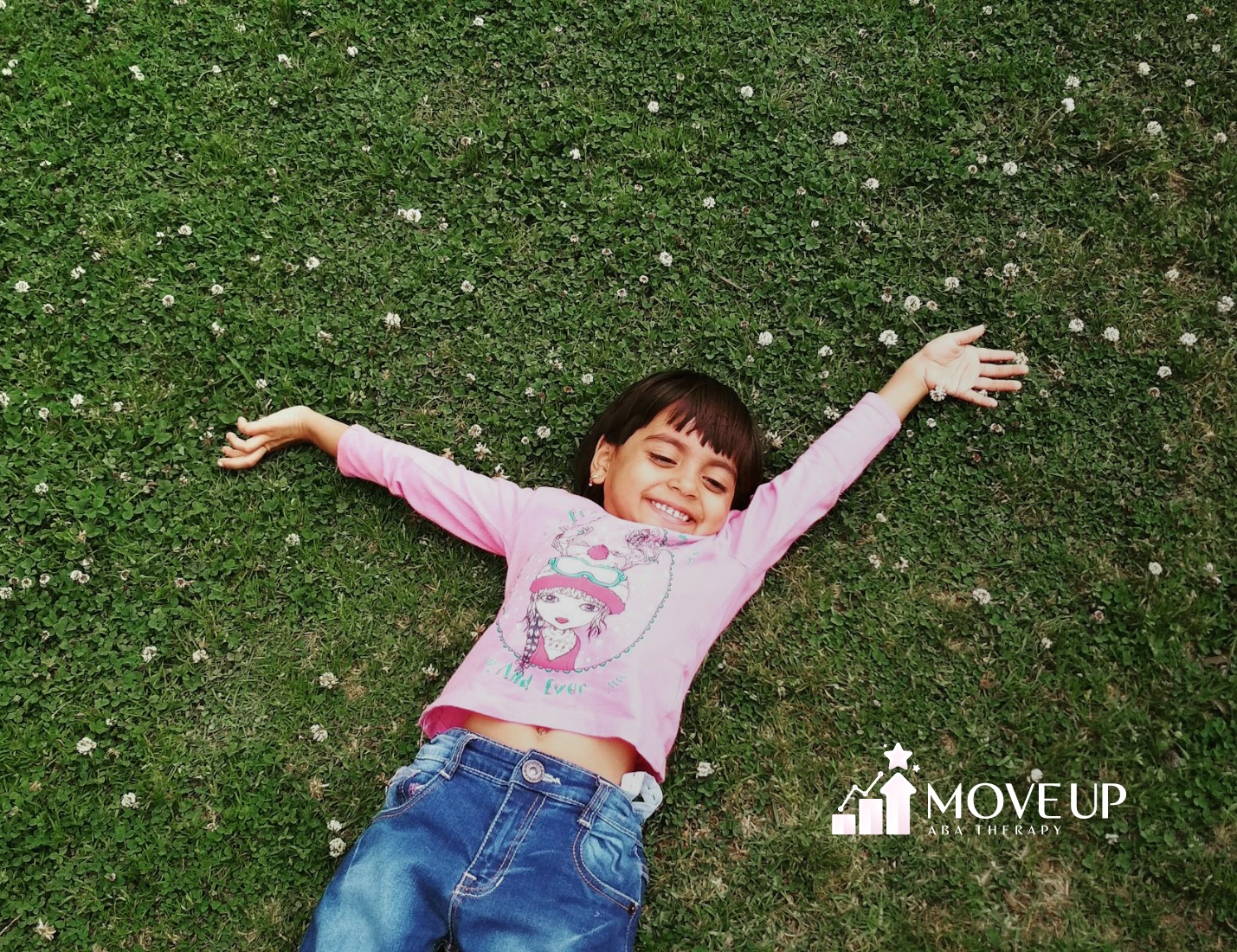Hey there, awesome parents and caregivers! Ready to embark on an exciting journey to find the best educational path for your little superstar? Buckle up, because we’re about to dive into the world of ABA therapy vs traditional therapy. Let’s turn this decision-making process into an adventure and watch your child shine!
Understanding the Landscape
First things first – what’s the deal with autism spectrum disorder (ASD)? Well, imagine if every child’s brain was a unique universe with its own special set of rules. That’s kind of what we’re talking about here! Some kiddos might find chatting a bit tricky, while others might be total chatterboxes but struggle with making friends. The spectrum is as colorful and varied as a rainbow!
Now, here’s the secret sauce: early intervention. It’s like giving your child a super-powered toolkit to navigate their world. The earlier we start, the more awesome tools we can pack into that kit. But with so many options out there, how do you choose the right path? Don’t worry, we’ve got your back!
Success Stories
“Move Up ABA has been a lifeline for our family. Before starting therapy, our son struggled with daily routines and communication. Now, he’s more independent and even initiated a conversation with a classmate for the first time! The progress we’ve seen in just six months is truly remarkable.”
- Emily R., Silver Spring, Accountant
“As a single dad, I was overwhelmed trying to manage my child’s behavior. The Move Up ABA team not only provided amazing support for my little girl but also taught me practical strategies to use at home. Their in-home sessions fit perfectly with our busy schedule. I’m so grateful for their patience and expertise.”
- Michael T., Rockville, Middle School Teacher
“We were hesitant about starting ABA therapy, but Move Up ABA’s approach put us at ease from day one. Our twins have made incredible strides in their social skills and self-regulation. The therapists are like extended family now, and we couldn’t be happier with our decision to work with them.”
- Aisha and James L., Simpson, Police Officers
Traditional School Setting: The Familiar Path
Let’s start with something we all know and love – the good ol’ school classroom. Picture this: colorful posters on the walls, the smell of crayons in the air, and the excited chatter of kiddos ready to learn. Sounds familiar, right?
A. Structure of a Traditional School Environment
Classroom Setting: Think of it as a learning party! There’s usually one teacher playing host to about 20-30 little guests, all learning and growing together.
Standardized Curriculum: It’s like a recipe for learning. All the kids in the same grade follow the same recipe, cooking up knowledge at a similar pace.
Group Instruction: Imagine a story time, but with math, science, and reading all mixed in. The teacher leads the show, and all the kiddos join in the fun.
B. Benefits of a Traditional School Setting

Social Interaction Opportunities: It’s like a friendship laboratory! Your child gets to practice making friends, sharing toys, and figuring out the whole “getting along with others” thing.
Academic Growth: From ABCs to 123s and everything in between, your child gets to explore a buffet of subjects. Who knows? They might discover they’re a mini-Einstein or a budding Picasso!
Exposure to Diverse Experiences: School is like a mini-version of the grown-up world. Kids learn to follow schedules, switch between activities, and adapt to different teaching styles. It’s life skills boot camp, but way more fun!
C. Challenges for Children with Autism in a Traditional School
Now, let’s keep it real. While traditional schools can be amazing, they can also be a bit tricky for our kiddos with autism:
Sensory Overload: For some of our little friends, a classroom can feel like a rock concert – exciting, but sometimes a bit too much. The chatter, the lights, even the feel of certain materials can be overwhelming. If you want to avoid this, you can always do a sensory processing test so your kiddos won’t have to suffer.
Difficulty Following Basic Instructions: When a teacher gives instructions to the whole class, it can sometimes feel like trying to catch butterflies with your hands for your child with autism. It can be tricky to grab onto all those words flying around!
Social Skills Challenges: Making friends and navigating social situations can sometimes feel like trying to solve a Rubik’s cube blindfolded. It’s doable, but it takes practice and patience.
But don’t worry! These challenges don’t mean traditional school is off the table. Many schools are like Swiss Army knives – equipped with all sorts of tools to help every child succeed. It’s all about finding the right fit for your unique superstar!
Applied Behavior Analysis (ABA) Therapy: A Tailored Approach
Now, let’s talk about the rock star of the autism therapy world – ABA therapy! Imagine if your child’s favorite playground had secret superpowers to teach new skills. That’s essentially what we’re talking about here!
A. What is ABA therapy?
ABA therapy is like having a personal trainer for your child’s brain. It’s all about understanding how your kiddo learns and behaves, then using that knowledge to teach new skills in a way that’s fun and effective.
Definition and Core Principles: At its heart, ABA therapy is about breaking down big skills into bite-sized pieces. It’s like learning to bake a cake – you don’t start by throwing everything in the oven. You learn each step one at a time!
Role of a Board Certified Behavior Analyst (BCBA): Think of a BCBA as the head coach of Team Your Child. They design the game plan, train the other players (therapists and caregivers), and make sure everyone’s working towards the same goals while being considerate (ethical) about it.
B. Key Components of ABA Programs
Highly Individualized Instruction: In ABA, we don’t believe in one-size-fits-all. Your child’s therapy plan is as unique as their fingerprint, tailored to their specific needs and superpowers.
Positive Reinforcement: Did your child use their words to ask for a snack? Time for a mini dance party! We’re all about catching your child being awesome and celebrating those wins.
Data-Driven Decision Making: We’re like scientists, constantly observing and tweaking our approach (in response to collected data) to make sure your child is making progress. It’s like having a GPS for your child’s development – we always know where we’re going!
C. Benefits of ABA Therapy
Focused on Developing Essential Skills: From communication to self-care, ABA helps your child build the skills they need to rock at life.
Addresses Specific Behavioral Challenges: Struggling with meltdowns or repetitive behaviors? ABA therapy is like a toolbox full of strategies to help manage these challenges.
Promotes Positive Behaviors: We’re not just about reducing challenging behaviors – we’re all about building up the good stuff too!
So there you have it, folks! A sneak peek into the world of ABA therapy. It’s like having a customized learning adventure designed just for your child. In our next section, we’ll put ABA therapy and traditional therapy head-to-head. Get ready for the ultimate showdown of educational approaches!
ABA Therapy vs Traditional Therapy: The Ultimate Showdown!

Alright, parents and caregivers, it’s time for the main event!
In this corner, we have the comforting, familiar face of traditional therapy, and in the other, the tailored powerhouse of ABA therapy.
Let’s break down this matchup and see how they compare!
A. Instructional Approach: Group Hug or One-on-One Dance?
Traditional Therapy: Picture a classroom full of kiddos, all learning together. It’s like a big group hug of education! The teacher leads the whole class through lessons, activities, and discussions.
ABA Therapy: This is more like a personalized dance lesson. Your child gets one-on-one attention from their ABA therapist, who tailors every step to your little one’s unique rhythm.
B. Environment: Bustling Beehive or Calm Oasis?
Traditional Therapy: The traditional school environment is like a busy beehive of learning. There’s always something buzzing – from art projects on the walls to the chatter of classmates.
ABA Therapy: ABA sessions often happen in a more structured environment. It’s like a calm oasis designed to help your child focus on learning without distractions.
C. Focus Areas: Broad Strokes or Laser Precision?
Traditional Therapy: In a traditional school setting, the focus is often on academic skills and general education. It’s like painting with broad strokes, covering a wide range of subjects.
ABA Therapy: ABA zeroes in on your child’s specific needs. It’s like using a laser to precisely target areas where your child needs extra support, from communication skills to behavioral challenges.
D. Progress Tracking: Report Cards or Daily Updates?
Traditional Therapy: In school, progress is often measured through standardized tests and report cards. It’s like getting a highlight reel of your child’s performance every few months.
ABA Therapy: ABA therapy programs use continuous data collection. It’s like having a real-time GPS tracking your child’s progress. You get regular updates and can adjust the course as needed.
Can ABA Therapy Replace School? The Million-Dollar Question!
Now, here’s a question that might be bouncing around in your brain: “Can ABA therapy replace school entirely?” Well, let’s unpack this treasure chest of a question!
ABA therapy is a powerful tool in your child’s developmental toolkit. It can help your little one build essential skills, manage challenging behaviors, and prepare for the adventures of learning. But here’s the thing: ABA therapy and school aren’t necessarily an either/or situation.
Many kiddos benefit from a combo approach. Think of it like a learning sundae – school is the ice cream base, and ABA therapy is the cherry on top that makes everything even better!
The Social Factor: Making Friends and Navigating the Playground
One big advantage of a school setting is the social interaction opportunities. It’s like a daily friendship workshop! While ABA therapy can help kids build social skills, the school environment provides real-world practice in a group setting.
The Best of Both Worlds: ABA Therapy + School = Super Learning Powers!
Many families find that combining ABA therapy with traditional schooling is the secret sauce for success. Your child can benefit from the structured, individualized approach of ABA while also enjoying the diverse experiences and social opportunities of school.
Some schools even collaborate with ABA therapists to create a seamless learning experience. It’s like having a team of superheroes working together to help your child soar!
Making the Right Choice: Your Child, Your Decision
Choosing between ABA therapy and traditional therapy (or deciding to blend both) is a big decision. But don’t worry – you’ve got this! Here are some factors to consider:
Your Child’s Individual Needs and Abilities: Every kiddo is unique, like a one-of-a-kind snowflake. What works for one child might not be the best fit for another.
Severity of Autism Symptoms: Some children might need more intensive, one-on-one support, while others might thrive in a traditional classroom with some extra help.
Availability of Support Services: Check out what autism support services are available in your local schools. Many offer special education programs and can accommodate children with diverse needs.
Family Preferences and Resources: Consider your family’s schedule, resources, and what feels right for you. Trust your parental superpowers – you know your child best!
The Early Bird Gets the Worm: Why Early Intervention Rocks!

Let’s talk about why starting early is so crucial. Early intervention is like planting a seed – the sooner you start nurturing it, the stronger it will grow!
Building a Strong Foundation
Early intervention, whether through ABA therapy or other approaches, helps build a strong foundation for future learning. It’s like giving your child a head start in the race of life!
Developing Crucial Skills
From communication to social interaction, early intervention helps your child develop the skills they need to thrive. It’s like equipping them with a Swiss Army knife of abilities to tackle whatever challenges come their way.
The Supporting Cast: Other Therapies in the Mix
While ABA therapy and traditional schooling are the stars of our show, let’s not forget about the awesome supporting cast of other therapies:
Occupational Therapy: This helps your child develop skills for daily living. Think of it as a “how to do life” coach!
Speech Therapy: For our kiddos who need extra help with communication, speech therapy is like a personal trainer for their talking muscles.
These therapies can complement both ABA and traditional schooling, creating a well-rounded approach to your child’s development. It’s like assembling your very own Avengers team of therapies!
Remember, parents and caregivers, you’re the real MVPs in this journey. Whether you choose ABA therapy, traditional schooling, or a mix of both, what matters most is your love, support, and dedication to your child’s growth.
At Move Up ABA, we’re here to cheer you on every step of the way. Need help navigating these choices? Want to learn more about how ABA therapy can support your child’s journey? We’re just a phone call or email away. Let’s work together to help your little star shine their brightest!
Now, who’s ready to embark on this amazing adventure of growth and learning? Let’s do this!
400 E Pratt St, Floor 8 Baltimore , Maryland 21202, United States
Questions?
Email Us: intake@moveupaba.com
Call Us: (410) 469-1090






